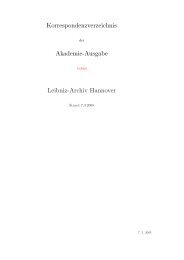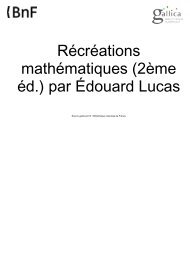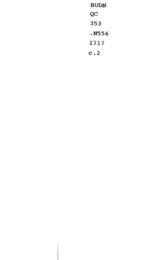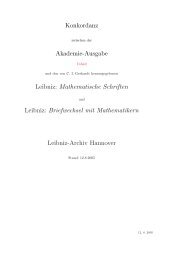The Second Book of Mathematical Puzzles and Diversions
The Second Book of Mathematical Puzzles and Diversions
The Second Book of Mathematical Puzzles and Diversions
Create successful ePaper yourself
Turn your PDF publications into a flip-book with our unique Google optimized e-Paper software.
<strong>The</strong> Five Platonic Solids 21<br />
triangles. Beyond five, the angles total 360 degrees or more<br />
<strong>and</strong> therefore cannot form a corner. We thus have three<br />
possible ways to construct a regular convex solid with tri-<br />
angular faces. Three <strong>and</strong> only three squares will similarly<br />
form a corner, indicating the possibility <strong>of</strong> a regular solid<br />
with square faces. <strong>The</strong> same reasoning yields one possibility<br />
with three pentagons at each corner. We cannot go beyond<br />
the pentagon, because when we put three hexagons together<br />
at a corner, they equal 360 degrees.<br />
This argument does not prove that five regular solids can<br />
be constructed, but it does show clearly that no more than<br />
five are possible. More sophisticated arguments establish<br />
that there are six regular polytopes, as they are called, in<br />
four-dimensional space. Curiously, in every space <strong>of</strong> more<br />
than four dimensions there are only three regular polytopes:<br />
analogs <strong>of</strong> the tetrahedron, cube <strong>and</strong> octahedron.<br />
A moral may be lurking here. <strong>The</strong>re is a very real sense<br />
in which mathematics limits the kinds <strong>of</strong> structures that<br />
can exist in nature. It is not possible, for example, that<br />
beings in another galaxy gamble with dice that are regular<br />
convex polyhedra <strong>of</strong> a shape unknown to us. Some theolo-<br />
gians have been so bold as to contend that not even God<br />
himself could construct a sixth Platonic solid in three-<br />
dimensional space. In similar fashion, geometry imposes un-<br />
breakable limits on the varieties <strong>of</strong> crystal growth. Some<br />
day physicists may even discover mathematical limitations<br />
to the number <strong>of</strong> fundamental particles <strong>and</strong> basic laws. No<br />
one <strong>of</strong> course has any notion <strong>of</strong> how mathematics may, if<br />
indeed it does, restrict the nature <strong>of</strong> structures that can be<br />
called "alive." It is conceivable, for example, that the proper-<br />
ties <strong>of</strong> carbon compounds are absolutely essential for life.<br />
In any case, as humanity braces itself for the shock <strong>of</strong> find-<br />
ing life on other planets, the Platonic solids serve as ancient<br />
reminders that there may be fewer things on Mars <strong>and</strong><br />
Venus than are dreamt <strong>of</strong> in our philosophy.

















